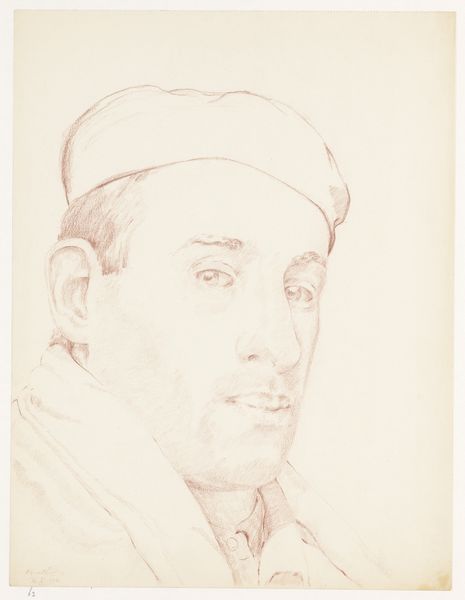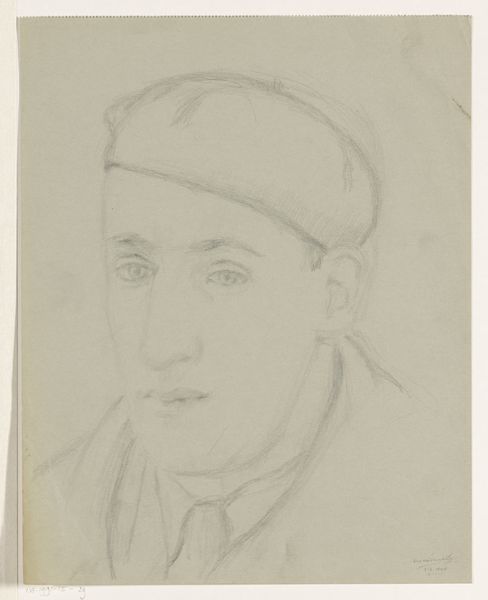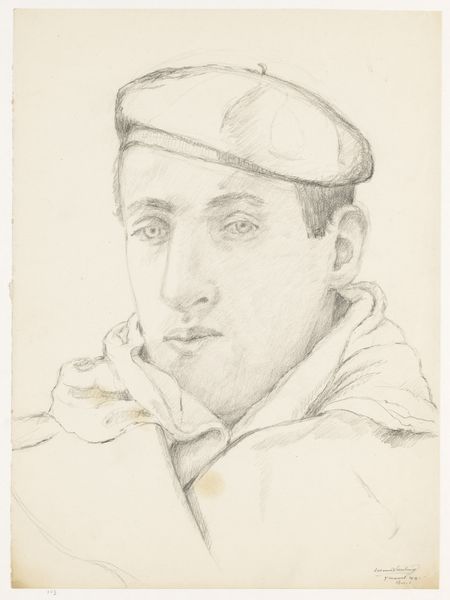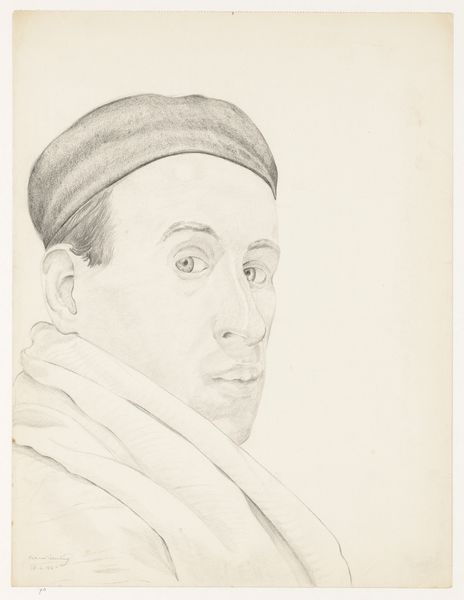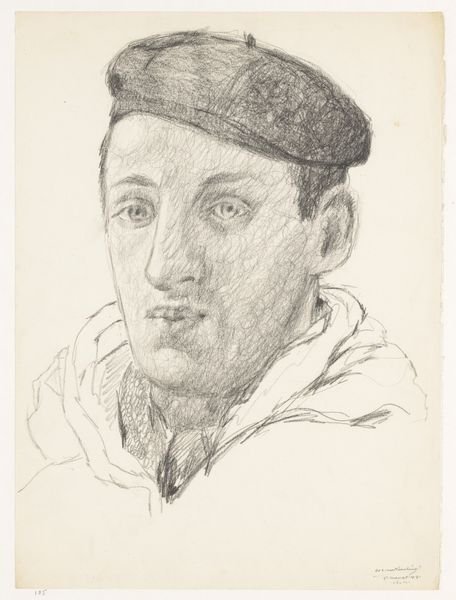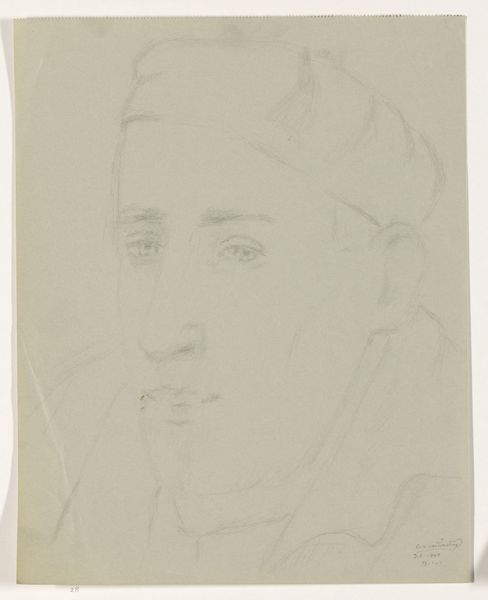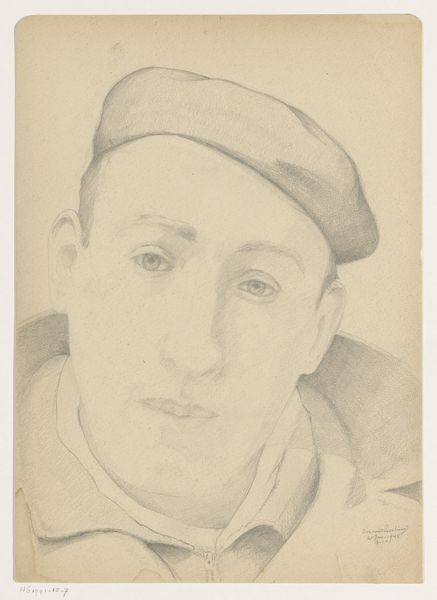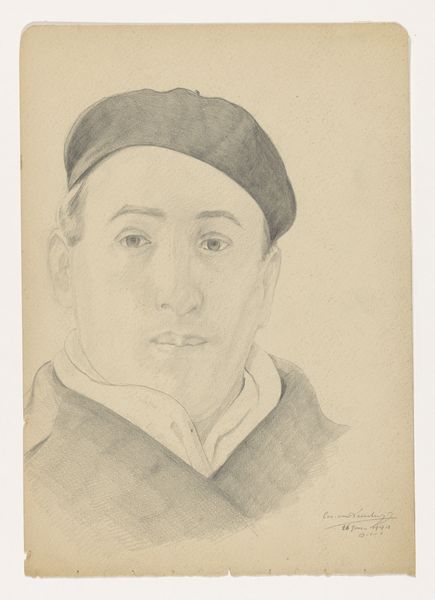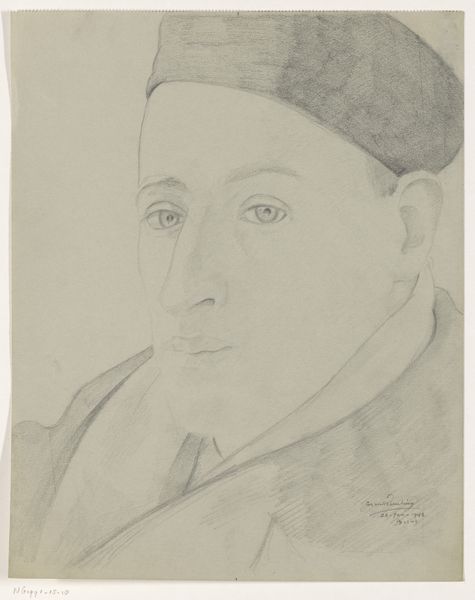
Dimensions: height 36.5 cm, width 27.0 cm
Copyright: Rijks Museum: Open Domain
Editor: So, here we have "Self-Portrait with Alpine Hat: B-1-1, March 5th," likely created between 1942 and 1945 by Cor van Teeseling. It's a pencil drawing. It feels incredibly intimate and almost melancholic, like a glimpse into the artist's private world. What strikes you when you look at this piece? Curator: The quietness, definitely. The soft, almost tentative lines of the pencil create such a fragile presence. It's more than just a face; it feels like a whispered confession. That alpine hat… is it a touch of youthful optimism? Or perhaps a borrowed identity, a wish for escape during very grim times? Editor: That idea of borrowed identity is interesting. The date certainly places it in a specific and turbulent context. Does that influence how you see it? Curator: Massively. Knowing this was potentially drawn during the war… those gentle lines become loaded with unspoken anxieties, don't they? It becomes a testament to resilience, to the simple act of observing oneself, even when the world outside is in chaos. What do you make of the almost naive style? It is like he isn’t “posing”, so what is he really doing in his mind? Editor: It feels disarmingly honest. There isn't any grandstanding, you know? He's just… there. Imperfect. Human. Maybe the slight caricature makes the drawing less self-centered, more observant. Curator: Exactly! It reminds me of my grandfather, who would wear hats indoors because he had nowhere else to store them! The artist seems caught between wanting to portray something significant, and being painfully aware of his own limitations, artistic or otherwise. What did you learn? Editor: That art can be a subtle act of defiance, a quiet claiming of space even in the most restricted of circumstances. What about you? Curator: That even in self-portraiture, we're often revealing far more than we intend.
Comments
No comments
Be the first to comment and join the conversation on the ultimate creative platform.

